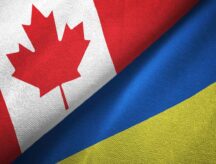Understanding Express Entry as a path toward Canadian immigration
Express Entry is Canada’s main method for bringing international skilled workers to this country through permanent residence.
One common misconception about Express Entry, however, is that this title denotes the name of a Canadian immigration program itself. In fact, Express Entry is simply the name given to the online system used to cumulatively manage skilled worker applications from three different programs — the Canadian Experience Class, the Federal Skilled Worker Program, and the Federal Skilled Trades Program.
Let us now dive a little deeper into the different steps involved with Express Entry.
Get a Free Express Entry Assessment
Step 1: Determine your eligibility
Much like any other immigration process in Canada, you must first determine your eligibility for any of the three skilled worker immigration programs identified above — the Canadian Experience Class, the Federal Skilled Worker Program, or the Federal Skilled Trades Program.
This process can be started by either answering a few questions to see if you meet the minimum requirements for any of the programs or reading through their detailed requirements.
Step 2: Submit a profile on IRCC and check your Comprehensive Ranking System (CRS) score
Once you determine that you are eligible, it is time to make and submit an online profile through Immigration, Refugees and Citizenship Canada (IRCC).
This step will involve gathering some key documents necessary to complete your IRCC profile, including a language test and an Educational Credential Assessment (ECA).
The Canadian government provides a list of all the documents you may need throughout this process, both for your IRCC profile and your eventual electronic Application for Permanent Residence (eAPR), which we will discuss later.
Once your profile is submitted, you will receive an official Comprehensive Ranking System (CRS) score from IRCC, which is crucial for immigrating to Canada as a skilled worker.
Step 3: Wait and see if you receive an invitation to apply (ITA)
Once your profile is submitted and you receive an official CRS score, IRCC will decide whether to issue you an Invitation to Apply (ITA) for permanent residence to Canada.
An ITA is the key to permanent residence for foreign skilled workers in Canada, and ITAs are given out through Express Entry draws conducted roughly every two weeks. Through these draws, IRCC invites a group of immigration candidates — typically those with the highest CRS scores — to apply for permanent residence in Canada.
Upon receipt of an ITA, the Canadian government notes that you will have 60 days to submit your application for permanent residence.
Step 4: Submit your completed electronic application for permanent residence (eAPR)
With 60 days to complete and submit your application for permanent residence, you must ensure that you have any of the documents you may need ready to go.
Here are a few examples of documents you may need: a birth certificate, proof of funds and a medical exam. The complete list of required documents can be found on the government of Canada’s website.
This step in the process will also require that you pay any fees associated with your application, obtain a medical exam, and pass a police background check to finalize your eAPR.
Once all the required actions are complete, it is time to finally submit your application for permanent residence to Canada.
Step 5: Wait for a final decision from IRCC
Now, the waiting game begins as it relates to the processing time for your permanent residence application.
The Canadian government says that “most complete applications that have all supporting documents” will be processed in six months or less. Canada’s service standard is to have 80% of Express Entry applications processed in six months.
Get a Free Express Entry Assessment
© CIC News All Rights Reserved. Visit CanadaVisa.com to discover your Canadian immigration options.
- Do you need Canadian immigration assistance? Contact the Contact Cohen Immigration Law firm by completing our form
- Send us your feedback or your non-legal assistance questions by emailing us at media@canadavisa.com







